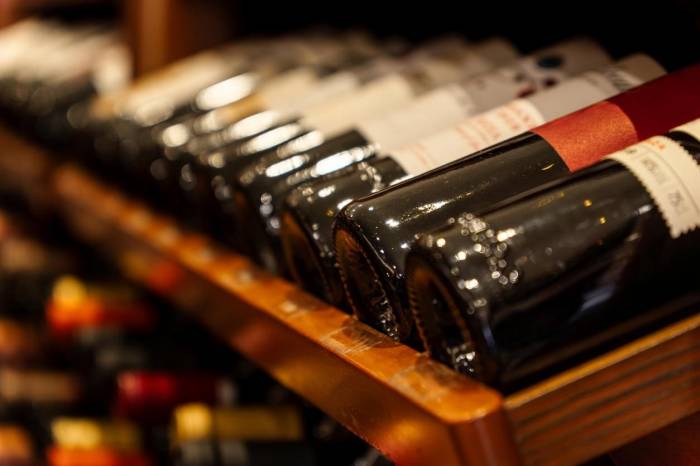Fine Wine Market Posts First Growth Since 2023 as Italian Labels and Sustainable Wines Gain Ground
Liv-ex indices show trade value up 9.5% and Italian wines among top performers, while Bordeaux’s dominance continues to decline
2025-10-23

The fine wine market is showing signs of renewed growth, with Italian labels standing out among the world’s top performers. According to analysts at Liv-ex, a leading global marketplace for fine wine trading often referred to as the “Wall Street of Fine Wine,” most major Liv-ex indices have posted their strongest gains since September 2022, except for the Bordeaux 500. The market is stabilizing, and prices are returning to levels seen before the Covid-19 pandemic.
The Liv-ex 1000, which is the broadest benchmark for the fine wine market, has risen for the first time since March 2023. Out of its components, 589 wines have either held steady or increased in price. The Liv-ex 100 index, which tracks prices for 100 of the most sought-after wines on the secondary market, recorded a 1.1% increase. A key indicator of market confidence, the bid-to-offer ratio, climbed to 0.71—its highest point since April 2023—signaling a strong convergence between supply and demand for these high-end wines.
Analysts Sophia Gilmour and Henry Johnson discussed these trends in a recent webinar attended by select media outlets. They noted that trading activity on Liv-ex is returning to pre-tariff levels. Compared to third-quarter averages, trade value is up by 9.5%, trade count by 4.2%, and volume by 6.4%.
Despite ongoing challenges for Bordeaux wines, Chateau Lafite Rothschild Premier Cru Classe from Pauillac leads the rankings, with its vintage trading at $5,633 per case of twelve bottles. This demonstrates that established brands can weather market volatility. Among the ten most traded wines by volume in early 2025, four are Italian: three vintages of Sassicaia from Tenuta San Guido in Bolgheri—2021 ($2,806 per case), 2022 ($2,411), and 2020 ($2,509)—and Solaia 2021 from Marchesi Antinori. These results highlight Italy’s growing share in global fine wine trading.
Sustainability is also gaining ground among top labels. Opus One from Napa Valley stands out with its 2021 vintage trading at $3,470 per case and holding Napa Green certification for sustainable practices. Another notable entry is Domaine Roulot Meursault from Burgundy. Jean-Marc Roulot has transformed his family’s estate through biodynamic methods, showing that innovation and respect for terroir can drive both quality and market success—even for wines not classified as Grand Cru.
Champagne is regaining momentum in the secondary market as well. Two vintage champagnes—Piper Heidsieck Rare Luminous 2013 ($1,079 per case) and Louis Roederer Cristal 2016 ($2,131)—are among the top ten by value traded. Champagne accounted for 16% of Liv-ex trades in September. However, retail consumption tells a different story: shipments through August fell by 1.8% year-on-year to 145 million bottles, according to Comité Champagne data. If this trend continues without a holiday season boost, it would mark another significant decline after a 9.2% drop in shipments in 2024.
The U.S. market has played a major role in these shifts. Rising champagne prices have led many American consumers to opt for less expensive alternatives, affecting both retail and secondary markets. Piper Heidsieck Rare Luminous 2013 led all champagnes in volume traded on Liv-ex.
Bordeaux remains the most traded region by both value and volume but has seen its dominance wane over time. In 2010, Bordeaux accounted for about 95% of secondary market trades; by 2021 this had dropped to between 35% and 40%. Even among First Growths—the region’s top estates—the share has fallen from around 70% to just 30%. Buyers are diversifying into other regions capable of producing wines that rival those from France.
Recent years have also seen Bordeaux struggle with high prices and unsold inventory from recent vintages. Some merchants have been forced to sell at cost or below purchase price to clear stock. Despite these challenges, Bordeaux indices are now improving and bid-to-offer ratios are moving in a positive direction. October data shows Bordeaux posting its strongest index gains since 2022—a sign that recovery may be underway.
Chateau Lafite Rothschild Premier Cru Classe remains at the top of trading charts, underscoring that while the fine wine landscape is evolving globally—with Italy and sustainable producers gaining ground—classic French estates continue to hold significant influence in the world’s most prestigious wine markets.
Founded in 2007, Vinetur® is a registered trademark of VGSC S.L. with a long history in the wine industry.
VGSC, S.L. with VAT number B70255591 is a spanish company legally registered in the Commercial Register of the city of Santiago de Compostela, with registration number: Bulletin 181, Reference 356049 in Volume 13, Page 107, Section 6, Sheet 45028, Entry 2.
Email: [email protected]
Headquarters and offices located in Vilagarcia de Arousa, Spain.